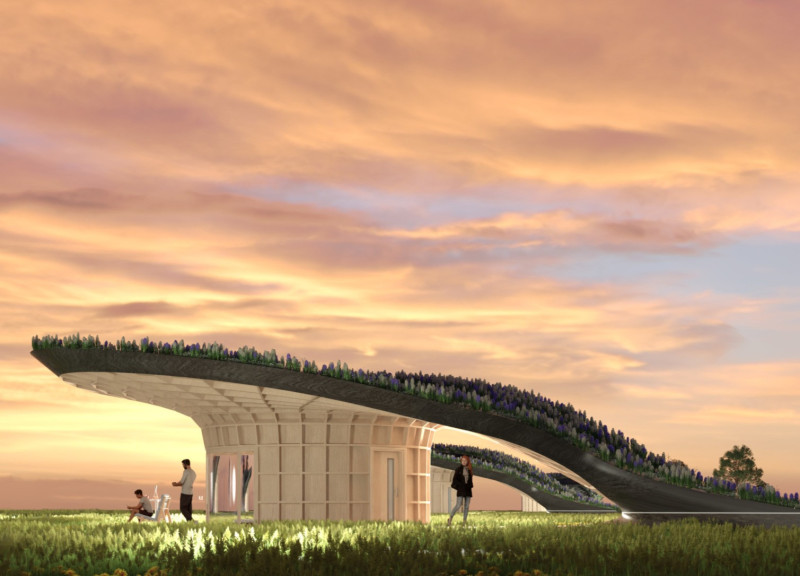5 key facts about this project
The Champignon Caramélisé project is an architectural design initiative located in Latvia, centered on creating cabins that resonate with the local landscape and cultural practices surrounding mushroom foraging. This project exemplifies a thoughtful integration of architecture and nature, showcasing how built environments can enhance and harmonize with their surroundings. Each cabin serves not only as accommodation but also as a platform for community interactions and engagement with the rich biodiversity of the region.
The design employs a range of sustainable materials that contribute to both functionality and aesthetics. The primary elements of the cabins include double monocoque timber structures that provide durability and flexibility, while charned timber finishes within the interiors introduce warmth and a natural ambiance. Additionally, the incorporation of large glass panels ensures panoramic views of the adjacent Venta River and surrounding fields, promoting a seamless connection between indoor and outdoor spaces.
Unique Design Approaches
A key feature that sets the Champignon Caramélisé project apart is the roof gardens atop each cabin. These gardens host diverse arrangements of local flora, reinforcing the integration of built environments with natural ecosystems. This initiative invites biodiversity, supporting pollinators and local wildlife, while enhancing the ecological footprint of the project. The design encourages seasonal engagement, adapting to the changing weather conditions often experienced in Latvia. Canopy overhangs provide protection from rain and snow, ensuring that outdoor spaces remain usable and inviting throughout the year.
Another distinctive aspect is the thoughtful spatial configuration that promotes community interaction. Pathways connect the individual cabins to shared facilities such as saunas and recreational areas, fostering opportunities for social activities among guests. The multi-use terraces on each cabin extend living spaces outdoors, encouraging occupants to engage with their natural surroundings.
Architectural Integration with Environment
The architectural design emphasizes natural ventilation through high windows and generous eaves, aligning with principles of sustainability and energy efficiency. By maximizing airflow, the project reduces reliance on mechanical climate control systems, thereby lowering environmental impact. The focus on local materials and traditional construction techniques further reinforces the relationship between the cabins and their geographical context.
In summary, the Champignon Caramélisé project illustrates a commitment to sustainable architecture that values cultural connections and ecological considerations. For those interested in exploring the architectural plans, sections, designs, and ideas behind this project, a comprehensive presentation is available that provides deeper insights into the unique features and thoughtful design approaches employed.






















































